
Wāṣif ʿAlī Wāṣif (15 January 1929 – 18 January 1993) was a distinguished Sufi master, true ʿāshiq-e-Rasool ṣallā -llāhu ʿalayhī wa-ʾālihī wa-sallam, celebrated poet, profound thinker, writer, educationist, reformer, and mystic from Pakistan. His work traverses many realms—literature, spirituality, philosophy, and social reform. Known for his unique ability to convey deep spiritual truths in simple, thought-provoking prose, Wāṣif ʿAlī Wāṣif touched countless hearts through his reflections on life, love, hope, and the human experience.
Wāṣif ʿAlī Wāṣif’s personality, much like his writings, encompassed a broad range of attributes and talents. His impact as a reformist, often referred to as “Musleh-e-Pakistan” (Reformer of Pakistan), is seen as a continuation of Allama Iqbal’s vision to awaken the Muslim world. His teachings and philosophy stirred a movement toward national and spiritual renewal, a cause to which many researchers have dedicated MPhil and PhD theses in Pakistan.
Beyond his intellectual contributions, Wāṣif ʿAlī Wāṣif was deeply rooted in the spiritual tradition of Chishtiya Qadriya Nizamia Niyazia, a branch of the renowned Chishti Sufi order. In 1969, during a pivotal moment in his spiritual journey, he took bai’at (spiritual allegiance) at the hands of Sulṭān-ul-ʿĀshiqīn Ḥaḍrat Shāh Muḥammad Ḥasan Sajjād Ṣāḥib (raḥimahu -llāh) also known as Hassan Mian Sahib, the then Sajjada Nashin (spiritual leader) of Khanqah Niaziya. This spiritual connection further enriched Wāṣif ʿAlī Wāṣif’s mystical journey, grounding him in the centuries-old teachings of love, compassion, and selflessness characteristic of the Chishti order.
THE CHISHTI ORDER
One of the oldest and most influential Sufi orders, was founded in Chisht, a small town near Herat, Afghanistan, around 930 CE by Abu Ishaq Shami. Rooted in the mystic traditions of early Islam, it traces its spiritual lineage through ʿAlī ibn Abī Ṭālib (karamallāhu wajhahū), the cousin and son-in-law of the Prophet Muhammad (ṣallā -llāhu ʿalayhī wa-ʾālihī wa-sallam), like many Sufi orders that emphasize devotion over sectarianism.
The Chishti order’s defining characteristic is its emphasis on love, tolerance, and openness, qualities reflected in its inclusive nature—its shrines welcome devotees from all backgrounds and faiths. Unlike other Sufi orders that sought royal patronage, the Chishti shaykhs traditionally maintained a distance from worldly power, focusing solely on the spiritual development of their followers.
The order reached the Indian Subcontinent in the 12th century through Khawaja Muʿīnuddīn Chishti, a seminal figure who established the Chishti order in Lahore and Ajmer. His spiritual successors—Qutb-ud-Din Bakhtyar Kaki, Baba Farid, and Nizamuddin Auliya—further expanded the Chishti order, giving rise to its two main branches: the Chishti Nizami and Chishti Sabiri lineages.
Over time, new branches of the order formed, with Shah Niyaz Ahmad creating the Chishtiya-Qadriya-Nizamia-Niyazia branch by merging the Chishti Nizami order with the Qadiriyya order. This union integrated the devotional practices of both orders, expanding the reach of Chishti teachings throughout South Asia and beyond. Today, the Chishti order remains a vital force in the spiritual life of South Asia, its message of universal love resonating with devotees across cultures.
From Muʿīnuddīn Chishti to Shah Niyaz Ahmad, the Chishti order has evolved, yet its core teachings of love, spiritual contemplation, and music (such as qawwali) continue to inspire generations. The order’s reach has expanded beyond South Asia to the West, where Chishti centers now serve seekers of various backgrounds in their pursuit of divine love.

LINEAGE TREE (SHAJRAH’I TAYYABA)
Lineage Tree (Shajrah’i Tayyaba)
- Sayyid al-Kawnayn Khātam an-Nabiyyīn Rasūl al-Karīm Ḥaḍrat Muḥammad Muṣṭafā (ṣallā -llāhu ʿalayhī wa-ʾālihī wa-sallam)
- Amīr al-Muʾminīn Ḥaḍrat ʿAlī ibn Abī Ṭālib (karamallāhu wajhahū)
- Ḥaḍrat Khwāja Ḥasan Baṣrī (raḥimahu -llāh)
- Ḥaḍrat Khwāja ʿAbdul Wāḥid ibn Zayd (raḥimahu -llāh)
- Ḥaḍrat Khwāja Abū Faʾiz Fudayl ibn ʿIyāḍ (raḥimahu -llāh)
- Ḥaḍrat Khwāja Sulṭān Ibrāhīm ibn Adham Balkhī (raḥimahu -llāh)
- Ḥaḍrat Khwāja Ṣadīduddīn Ḥudhayfah Marʿashī (raḥimahu -llāh)
- Ḥaḍrat Khwāja Amīnuddīn Hubayrah Baṣrī (raḥimahu -llāh)
- Ḥaḍrat Khwāja Mumshād ʿUlūwī Dinwarī (raḥimahu -llāh)
- Ḥaḍrat Khwāja Isḥāq Shāmī Chishtī (raḥimahu -llāh)
- Ḥaḍrat Khwāja Abū Aḥmad Chishtī (raḥimahu -llāh)
- Ḥaḍrat Khwāja Abū Muḥammad ʿAbdāl Chishtī (raḥimahu -llāh)
- Ḥaḍrat Khwāja Nāṣiruddīn Abū Yūsuf Chishtī (raḥimahu -llāh)
- Ḥaḍrat Khwāja Quṭbuddīn Maʿdūd Chishtī (raḥimahu -llāh)
- Ḥaḍrat Khwāja Ḥājī Sharīf Zindānī Chishtī (raḥimahu -llāh)
- Ḥaḍrat Khwāja ʿUthmān Hārūnī Chishtī (raḥimahu -llāh)
- Ḥaḍrat Khwāja Muʾīnuddīn Ḥasan Chishtī Ajmerī (raḥimahu -llāh)
- Ḥaḍrat Khwāja Quṭbuddīn Bakhtiyār Kākī Iwashī Chishtī (raḥimahu -llāh)
- Ḥaḍrat Khwāja Farīduddīn Masʿūd Ganj Shakar Ajodhanī Chishtī (raḥimahu -llāh)
- Ḥaḍrat Khwāja Niẓāmuddīn Muḥammad Bukhārī Badāyūnī Chishtī (raḥimahu -llāh)
- Ḥaḍrat Khwāja Makhdoom Naṣīruddīn Maḥmūd Chirāgh Dehlvī Awadhī Chishtī (raḥimahu -llāh)
- Ḥaḍrat Khwāja Mawlānā Kamāluddīn Allāma Chishtī (raḥimahu -llāh)
- Ḥaḍrat Khwāja Mawlānā Sirāj-ul-Ḥaqq Waḥiuddīn Chishtī (raḥimahu -llāh)
- Ḥaḍrat Khwāja Mawlānā ʿIlmuddīn Chishtī (raḥimahu -llāh)
- Ḥaḍrat Khwāja Mawlānā Shaykh Maḥmūd Chishtī (raḥimahu -llāh)
- Ḥaḍrat Khwāja Mawlānā Shaykh Jamāluddīn Chishtī (raḥimahu -llāh)
- Ḥaḍrat Khwāja Mawlānā Shaykh Muḥammad Ḥasan Chishtī (raḥimahu -llāh)
- Ḥaḍrat Khwāja Mawlānā Shaykh Muḥammad Chishtī (raḥimahu -llāh)
- Ḥaḍrat Khwāja Muḥyuddīn Yūsuf Yaḥyā Madanī Chishtī (raḥimahu -llāh)
- Ḥaḍrat Mawlānā Shāh Kalīmullāh Jahānābādī (Dehlvī) Chishtī (raḥimahu -llāh)
- Ḥaḍrat Mawlānā Shāh Niẓāmuddīn Aurangābādī Chishtī (raḥimahu -llāh)
- Ḥaḍrat Khwāja Sayyid Fakhruddīn Muḥammad Dehlvī Chishtī (raḥimahu -llāh)
- Ḥaḍrat Shāh Niyāz Aḥmad Qādrī Chishtī (raḥimahu -llāh)
- Tāj-ul-Awliyāʾ Ḥaḍrat Shāh Nizāmuddīn Ḥusayn Ṣāḥib (raḥimahu -llāh)
- Sirāj-us-Sālikīn Ḥaḍrat Shāh Muḥīuddīn Aḥmad Ṣāḥib (raḥimahu -llāh)
- Imām-us-Sālikīn Maḥbūb-e-Ḥaqq Ḥaḍrat Shāh Muḥammad Taqī ʿAzīz Miyān Ṣāḥib (raḥimahu -llāh)
- Ḥaḍrat Shāh Zaynul-ʿĀbidīn ʿĀbid Miyān Ṣāḥib (raḥimahu -llāh)
- Sulṭān-ul-ʿĀshiqīn Ḥaḍrat Shāh Muḥammad Ḥasan Sajjād Ṣāḥib (raḥimahu -llāh)
Following this rich spiritual lineage, Wāṣif ʿAlī Wāṣif emerged as a prominent Sufi mystic who devoted his life to spreading the light of spiritual wisdom.
Waṣif ʿAlī Waṣif expressed his deep connection with the spiritual orders in the following words:
“Maiñ ʿaqīdatan Sunī hūñ. Auliyāʾ kirām kā khādim hūñ. Mujhay Chishtī, Qādrī, Naqshbandī, Suhrawardī, aur Ṣābrī buzurgōn say mehrbānīyān wusūl huʾī hain.”
“I am, by faith, a Sunni. I am a servant of the saints (Auliyāʾ kirām). I have received favors from the revered Chishtī, Qādrī, Naqshbandī, Suhrawardī, and Ṣābrī saints.”
This highlights his spiritual alignment and respect for the revered saints across various silsilas. Though primarily devoted to the Chishtīya, Qādrīya, Naqshbandīya, Suhrawardīya, and Ṣābrī orders, he received blessings and spiritual favors from all these distinguished paths. Through his wisdom and teachings, Wāṣif ʿAlī Wāṣif embodied the essence of these profound spiritual traditions.
He believed that inner awakening and self-realization were the keys to transforming society. His message resonated with people from all walks of life, and his gatherings became a source of spiritual nourishment for countless seekers. His words continue to inspire those who seek deeper meaning and a more profound connection to the divine.
Wāṣif ʿAlī Wāṣif’s literary genius and insightful philosophy positioned him as a towering figure in modern Sufism. He was indeed a true ʿāshiq of the Prophet ṣallā -llāhu ʿalayhī wa-ʾālihī wa-sallam, who built his life upon the principles of love, virtue, and illumination. His work remains relevant today, guiding individuals towards spiritual and intellectual awakening. In every action and every word, the essence of truth and love radiated from him, teaching us the profound significance of sincerity and devotion in the love of the Messenger of God.
Through this exploration, we invite you to delve into the life, works, and teachings of Wāṣif ʿAlī Wāṣif—a sage whose legacy continues to illuminate the path for seekers of truth.
QUTUB AL-IRSHAD & THE HIERARCHY OF SAINTS
Qutub al-Irshad and the Hierarchy of Saints in Sufism
Wasif Ali Wasif is revered as Qutub al-Irshad, a vital title within the Sufi hierarchy that refers to a saint or spiritual leader responsible for guiding and advising other saints (Awliya). This role forms part of a structured hierarchy of saints, which includes various ranks, each with specific responsibilities.
Hierarchy of Saints Overview
- Qutub (or Qutb): The highest rank among saints, seen as the spiritual pole of the universe. Responsible for extracting divine knowledge from the essence of the Prophet Muhammad (ṣallā -llāhu ʿalayhī wa-ʾālihī wa-sallam) and channeling it to humanity.
- Ghawth (The Helper or Means of Divine Help): Represents saints of the highest rank, endowed with divine favor. Acts as a leader and source of spiritual support, with the ability to mirror divine assistance in the world. A Ghawth who also holds the rank of Qutb is termed Ghawth al-A’zam (the Greatest Helper), while a Qutb who is also a Ghawth is called Qutb al-A’zam (the Greatest Pole). This dual rank signifies a profound connection to divine wisdom and authority in spiritual matters.
- Qutub al-Aqtab: Supervises all other Qutbs and ensures coordination among different ranks of saints.
- Qutub al-Bilad: Manages the spiritual affairs of specific geographical areas or communities and addresses the needs of local populations.
- Qutub al-Mutassarif: Responsible for directing spiritual energy and blessings to various beings and mediating between the divine and earthly realms.
- Qutub al-Irshad: Advises and guides the 124,000 Awliya, playing a critical role in maintaining the spiritual health of the community. Focuses on disseminating the teachings of the Prophet Muhammad and preserving the integrity of the spiritual lineage.
Additional Ranks in the Hierarchy
- Nujabaa (Nobles): Eight in number, they hold significant spiritual authority.
- Nuqabaa: Twelve leaders who oversee groups of Awliya.
- Abdāl: Seven saints who act as intermediaries, frequently exchanging places.
- Awtād: Four pillars of the spiritual realm.
- A’immah (Guides): Two key figures who provide overarching guidance to the spiritual community
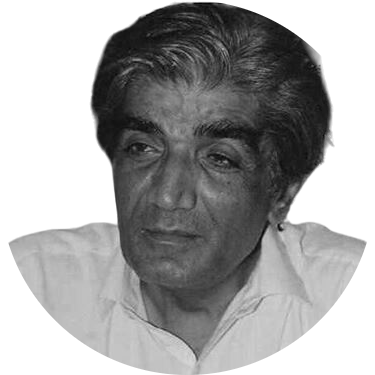
Biographical Sketch of Ḥadrat Wāṣif ʿAlī Wāṣif
Birth and Early life
Ḥadrat Wāṣif ʿAlī Wāṣif was born on January 15, 1929, in Shāhpur tehsil, which was then a district and is now part of Khushāb district. His father’s name was Malik Muḥammad ʿĀrif, a member of the prestigious Awan tribe, specifically from the distinguished Kundan branch. The Awan tribe claims descent from Ḥadrat ʿAwn Muḥammad Quṭb Shāh, who accompanied Maḥmūd of Ghaznī to the region in the 10th century. Ḥadrat ʿAwn Muḥammad Quṭb Shāh was a direct descendant of ʿAbbās ibn ʿAlī (raḍiyallāhu ʿanhu), also known by his kunya, Abū al-Faḍl (“Father of Virtue”). ʿAbbās ibn ʿAlī (c. 15 May 647 – 10 October 680 CE), was the son of Ḥadrat ʿAlī ibn Abī Ṭālib (karramallāhu wajhahū), the fourth Rāshid caliph and the first Imām in Shia Islam, and Fāṭimah bint Ḥizām, commonly known as Umm al-Banīn (“Mother of the Sons”). The title “Quṭb Shāh” was given to ʿAwn Muḥammad as a mark of his leadership within the tribe.
Upon settling in Khushāb, the Kundan family established their roots in a neighborhood known as Moḥalla Kundanwalla.

In 1729, Muḥammad Jamāl, an ancestor from this tribe, settled there, and seven generations later, Wāṣif ʿAlī Wāṣif was born. His genealogy traces back to Muḥammad Jamāl as follows: Wāṣif ʿAlī Wāṣif, son of Malik Muḥammad ʿĀrif, son of Muḥammad Ashraf, son of Ghaus Muḥammad, son of Khair Muḥammad, son of Gheeba Khān, son of Nūr Muḥammad, son of Muḥammad Jamāl Awan.
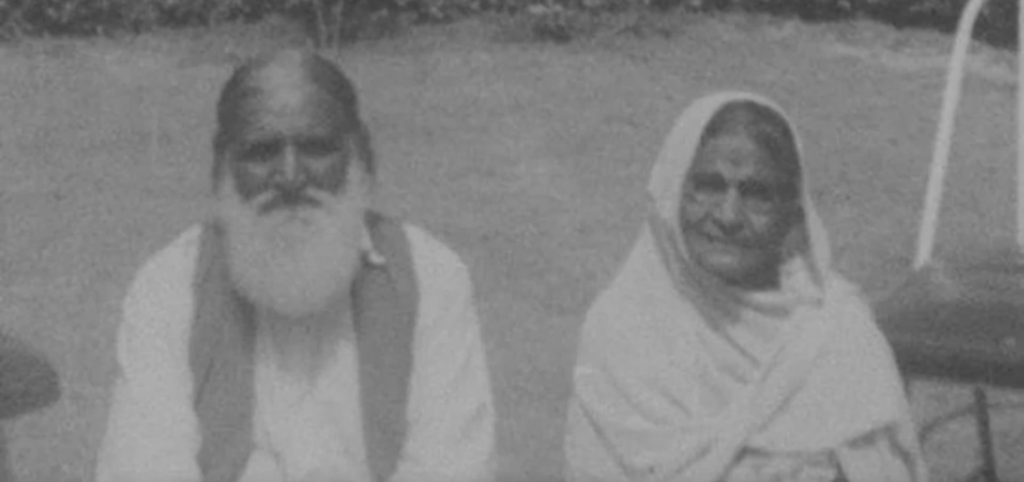
Education
Wāṣif Ali received his early education in Khushab. On June 1, 1942, he passed his middle school examination from Government High School, Khushab. He then moved to Jhang to live with his maternal grandfather, who was a prominent educator and had worked under the leadership of Quaid-e-Azam in Amritsar for the Muslim League during his youth. Wāṣif’s father decided that he should continue his education in Jhang, where his academic potential truly flourished. Wāṣif later remarked, “During my student years, competition was so intense that we considered it our right to come first.” He completed his matriculation from Government High School, Jhang, on November 1, 1944, under roll number 26476, securing a first division. At that time, exams were conducted by Punjab University rather than a board. He then passed his FA (Intermediate) from Government Intermediate College, Jhang, on January 2, 1948, again with first division under roll number 7809. Following this, he earned his BA from Government College, Jhang, on December 19, 1949, with roll number 1137, once more achieving a first division. In that era, obtaining a BA, let alone in the first division, was a significant accomplishment.
Physical and Extracurricular Activities
Wāṣif ʿAlī Wāṣif was handsome, tall, and physically strong. Although he participated in various sports, he was a regular hockey player during his school and college years. In 1948-49, he was awarded a color for his outstanding performance in hockey. He also actively participated in various college activities and received the “Award of Honor” in 1949 for his involvement. On September 27, 1954, he was awarded an honorary certificate for his training and service at the West Pakistan Police Training Center.
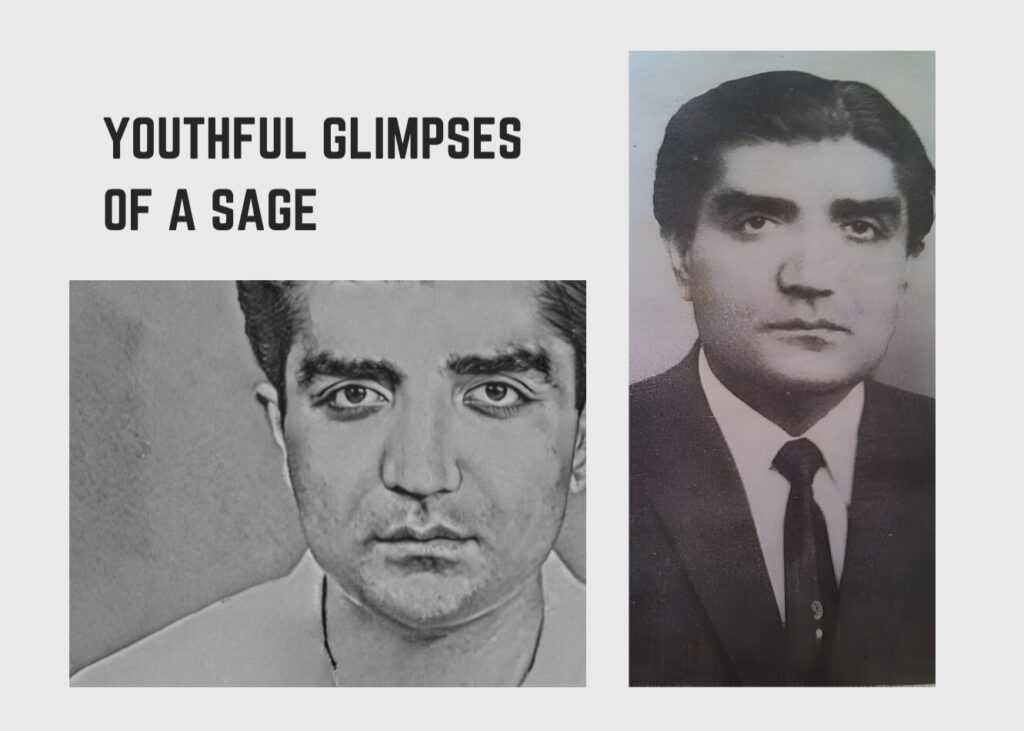
Higher Education
Wāṣif ʿAlī Wāṣif went on to complete his MA in English Literature from Punjab University, where he studied at Government College Lahore and lived in the hostel. He contributed several articles to the college magazine Ravi, two of which, written in English, have survived: one on the dire state of the hostel and another on the farewell party for the final-year class. His classmates from this period have remained active in various fields.
Professional Life
According to the Punjab Gazette of June 1954, Wāṣif passed the civil service exam under roll number 139, achieving high marks in various subjects, particularly scoring 61 out of 100 in General Urdu. Despite his high merit, his unique disposition and inclination towards mysticism led him to forgo a career in civil service in favor of teaching. He began teaching private classes at a Punjabi college near Regal Chowk, Lahore, but later founded his own institution called Lahore English College on Nabha Road near Old Anarkali in 1962.

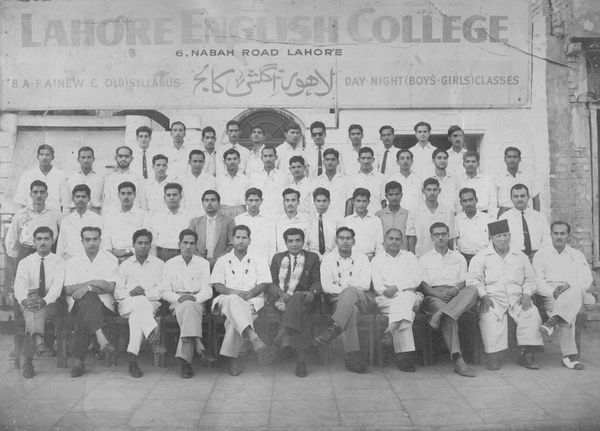
Persona
Wāṣif ʿAlī Wāṣif’s personality, much like his writings, encompassed a broad range of attributes and talents. His impact as a reformist, often referred to as “Musleh-e-Pakistan” (Reformer of Pakistan), is seen as a continuation of Allama Iqbal’s vision to awaken the Muslim world. His teachings and philosophy stirred a movement toward national and spiritual renewal, a cause to which many researchers have dedicated MPhil and PhD thesis in Pakistan.
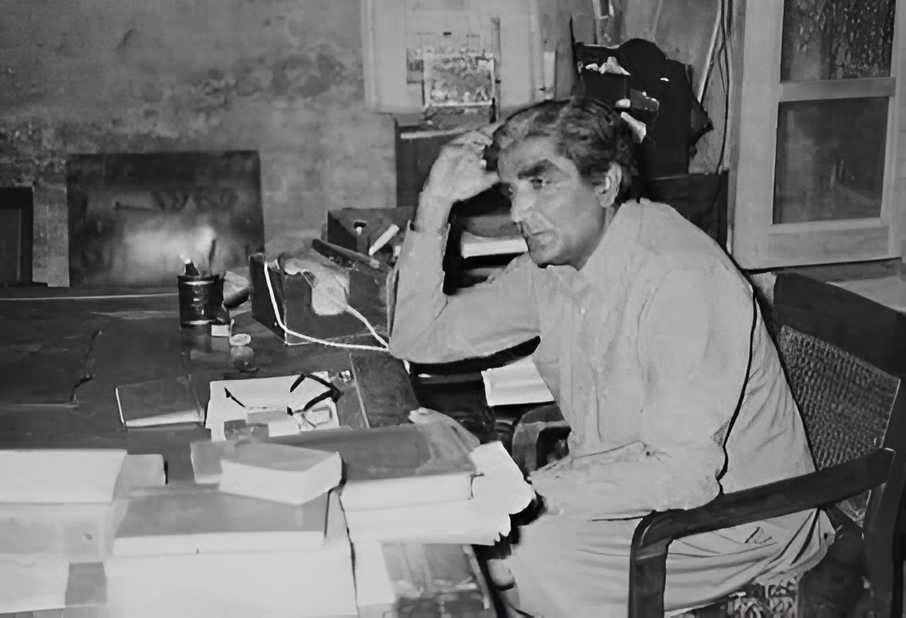
Spiritual Heritage and Early Inclinations
Wāṣif’s father, Malik Muḥammad ʿĀrif, had also been a teacher and had settled in Lahore after retirement. He was devout, dedicated to prayer, and engaged in regular recitations of the Qur’an, studying Tafsīr Ḥaqqānī and Mas̱navī Maulānā Rūmī. A disciple of the Chishtī order from Taunsa Sharif, he held deep reverence for Ḥadrat Khawāja Ghulām Farīd. Wāṣif ʿAlī Wāṣif inherited his father’s spiritual tendencies from an early age, regularly visiting the shrines of saints both in Pakistan and India.
From his early childhood, Wāṣif ʿAlī Wāṣif exhibited signs of spiritual awakening. He once recalled that whenever he heard the adhān (call to prayer), a trembling sensation would overcome him. This deep connection to the sacred only intensified as he matured. Alongside his academic pursuits, he maintained a rigorous spiritual practice, regularly attending Tahajjud prayers and dedicating himself to late-night contemplation and writing. His poetry manuscripts often bear timestamps between two and four in the morning, reflecting his devotion to spiritual and intellectual refinement.

Despite his demanding schedule as a teacher, where he taught English late into the night and after Fajr prayers, Wāṣif ʿAlī Wāṣif also made time for community and hospitality. His college hosted a regular langar (communal kitchen), where visitors from various backgrounds—students, poets, bureaucrats, and spiritual seekers—were served tea. Wāṣif often joined them, engaging in discussions that ranged from poetry to spiritual matters, enriching the lives of everyone around him.

Personal Life & Marriage
Wāṣif ʿAlī Wāṣif married later in life due to his ascetic nature and inclination toward spiritual devotion. After persistent encouragement from his well-wishers and parents, he agreed to marry.
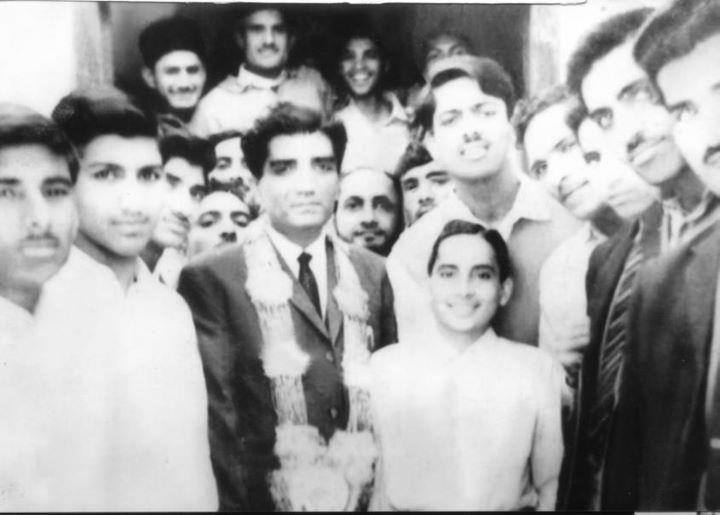
On Saturday, October 24, 1970, corresponding to 22 Sha’ban 1390 AH, his wedding took place. He had a son named Kashif Mahmood, followed by three daughters.
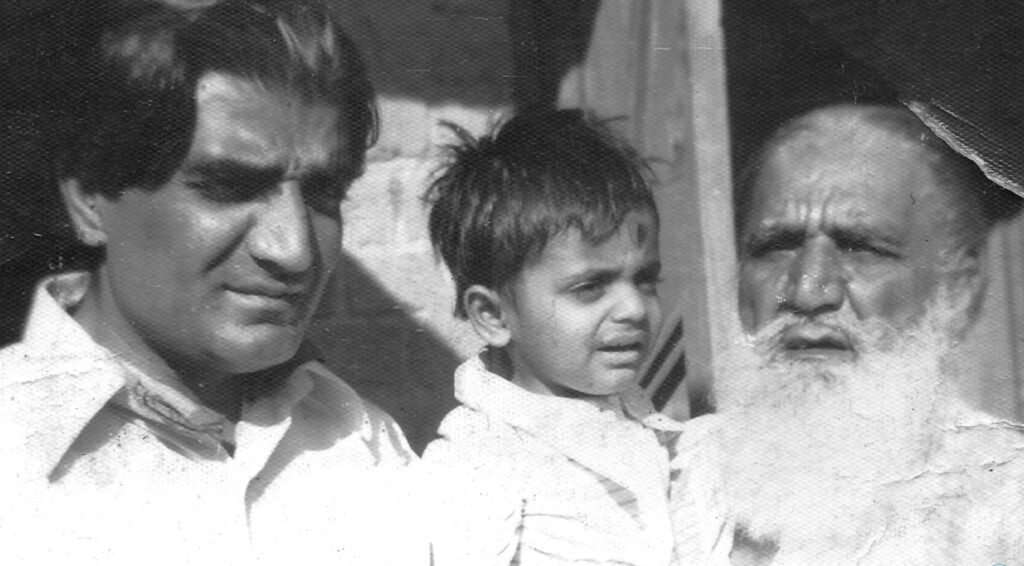
Literary Contributions and Public Presence
Wāṣif ʿAlī Wāṣif was known for his reticence, speaking and writing only when asked a question. On one occasion, when someone jestingly remarked that he couldn’t write poetry, he wrote 300 verses that night. His poems and writings were regularly published in various newspapers and magazines, and upon the insistence of his followers, his works were compiled. His first poetry collection, Shab Chiragh, was published in 1978, accompanied by a striking photograph from his college days.
As his following grew, his gatherings became more formal, initially taking place in Lakshmi Chowk and later at the home of the late Niazi Sahib at the Physical Training Institute near Gaddafi Stadium. Over a thousand nights, people would gather to ask him questions, and he would respond. This practice later continued at his residence.

In 1984, he was invited to speak at the Majlis-e-Iqbal at MAO College, Lahore. His words left a lasting impact, and after a report of the event was published in Nawa-i-Waqt newspaper, there was a public demand for more of his writings. He began writing columns for the newspaper, with the first column titled Mohabbat (Love).
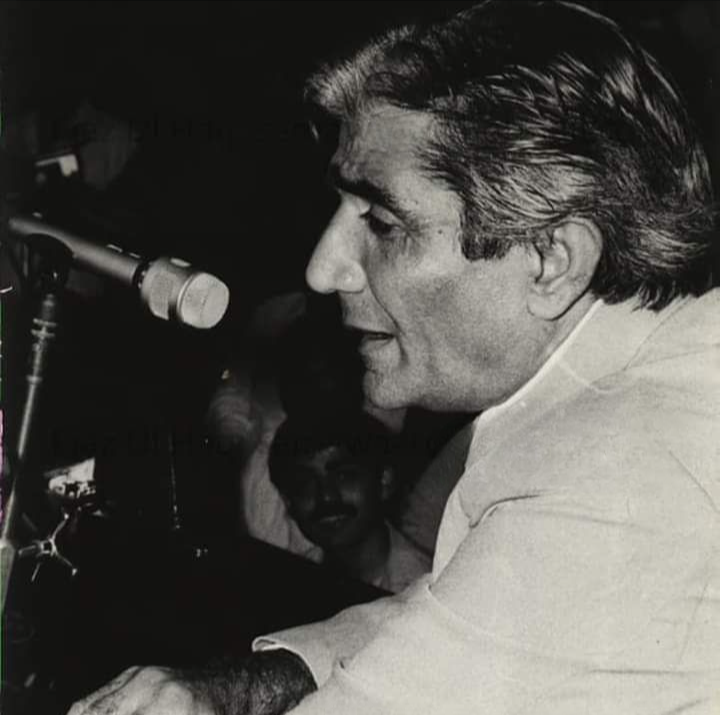
Union with the Divine (Wisāl)
Wāṣif ʿAlī Wāṣif passed away on January 18, 1993, corresponding to 24 Rajab 1415 AH. Despite his departure from this world, his teachings and spiritual light continue to spread, and it is believed that his ultimate mission—the Renaissance of Islam—will be realized, as he predicted that the world would witness the true essence of Islam before the end of this century.